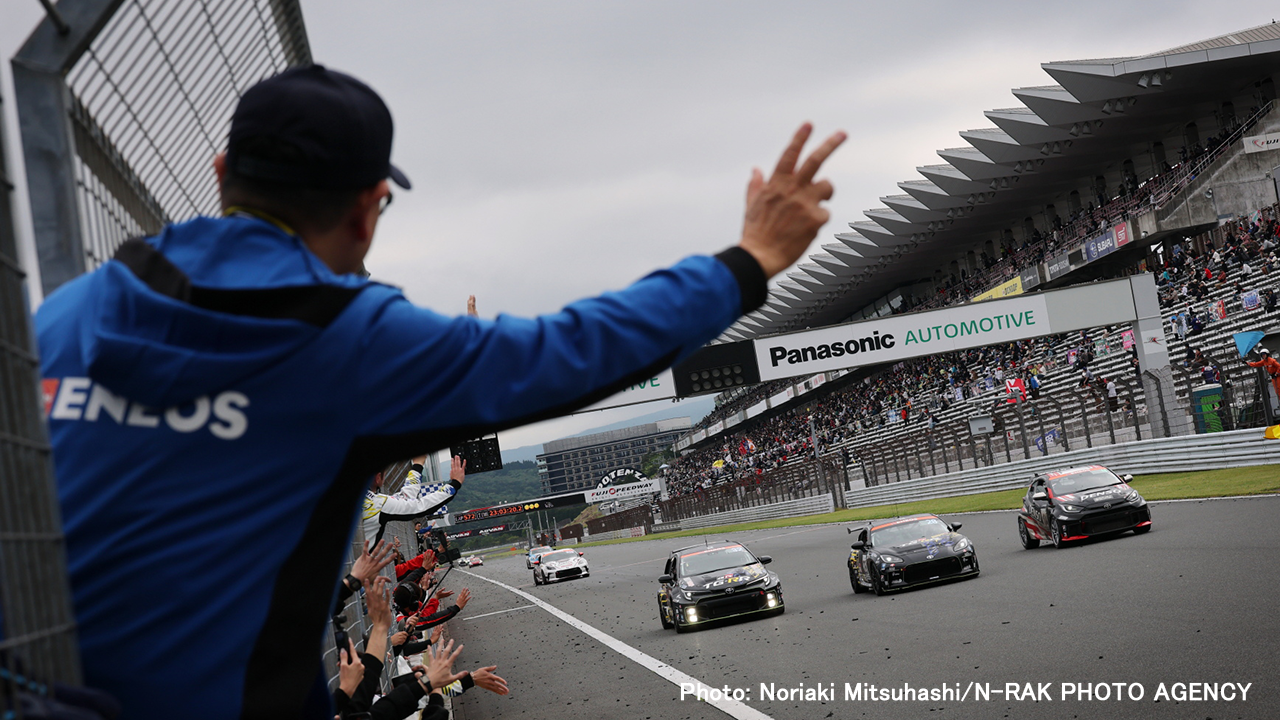
Super Taikyu Series Round 3 is the Fuji 24 Hours. Currently Japan's only 24-hour race, this annual festival of motorsports draws racers, fans, as well as like-minded peers from many fields. We caught up with them on race day.
Lowering the bar for karts
At Fuji Speedway’s kart track, the media was also invited to test-drive TGR’s previously announced carbon-neutral fuel kart.
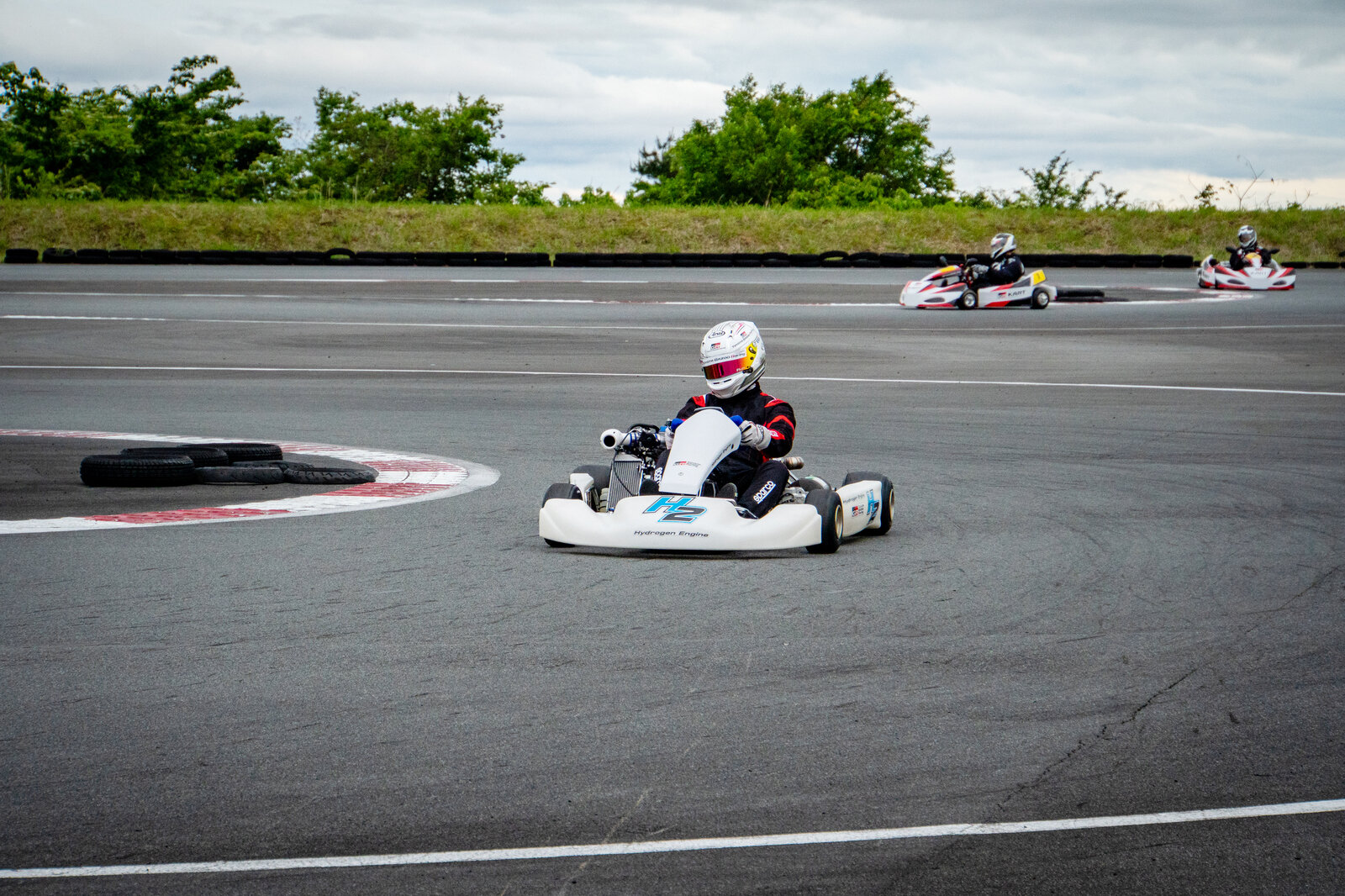
Although TGR’s karts currently run on carbon-neutral fuels and gasoline, in the future, the team is also looking to emulate the Corolla H2 project by bringing in hydrogen engines.
In building karts, TGR is looking to ensure the future sustainability of motorsport by engaging children and families.
The hope is that experiencing motorsport through karts will foster the next generation of car lovers and talent for the auto industry.
As a way to lower the barriers to entry for this family demographic, the event also featured a demonstration of a karakuri stand that allows GR karts to be loaded into ordinary minivans, eliminating the need for specialized vehicles.
At Toyota, “karakuri” refers to ways of automating and improving tasks without relying on electricity, by using simple mechanisms such as gears, springs, and levers.
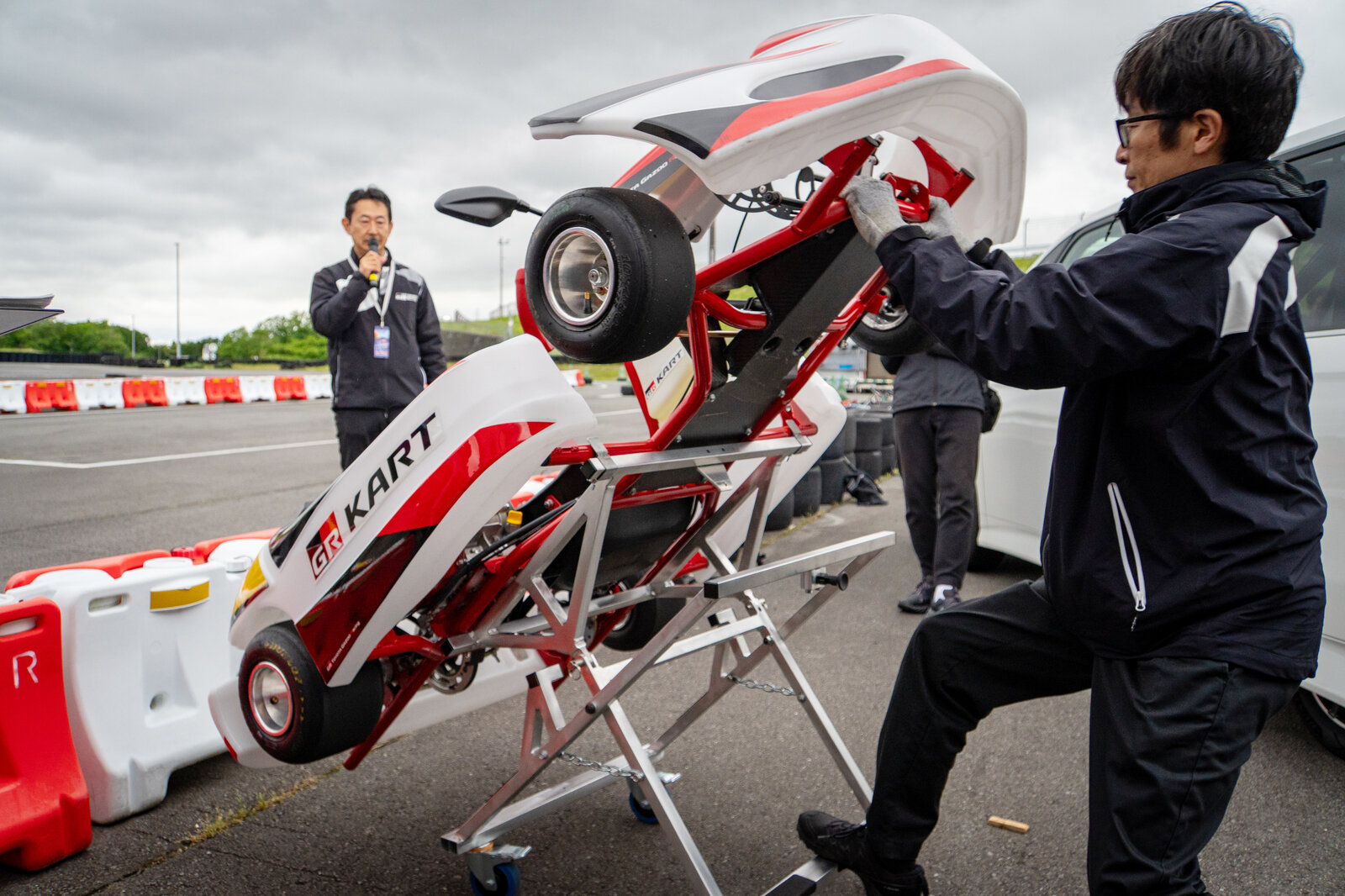
A regular kart weighs around 70 kg, requiring two adults to lift it. With this folding stand, however, the principles of leverage make it possible for a single person to perform the task.
Now, a father or mother going karting with their child can load and unload it by themselves.
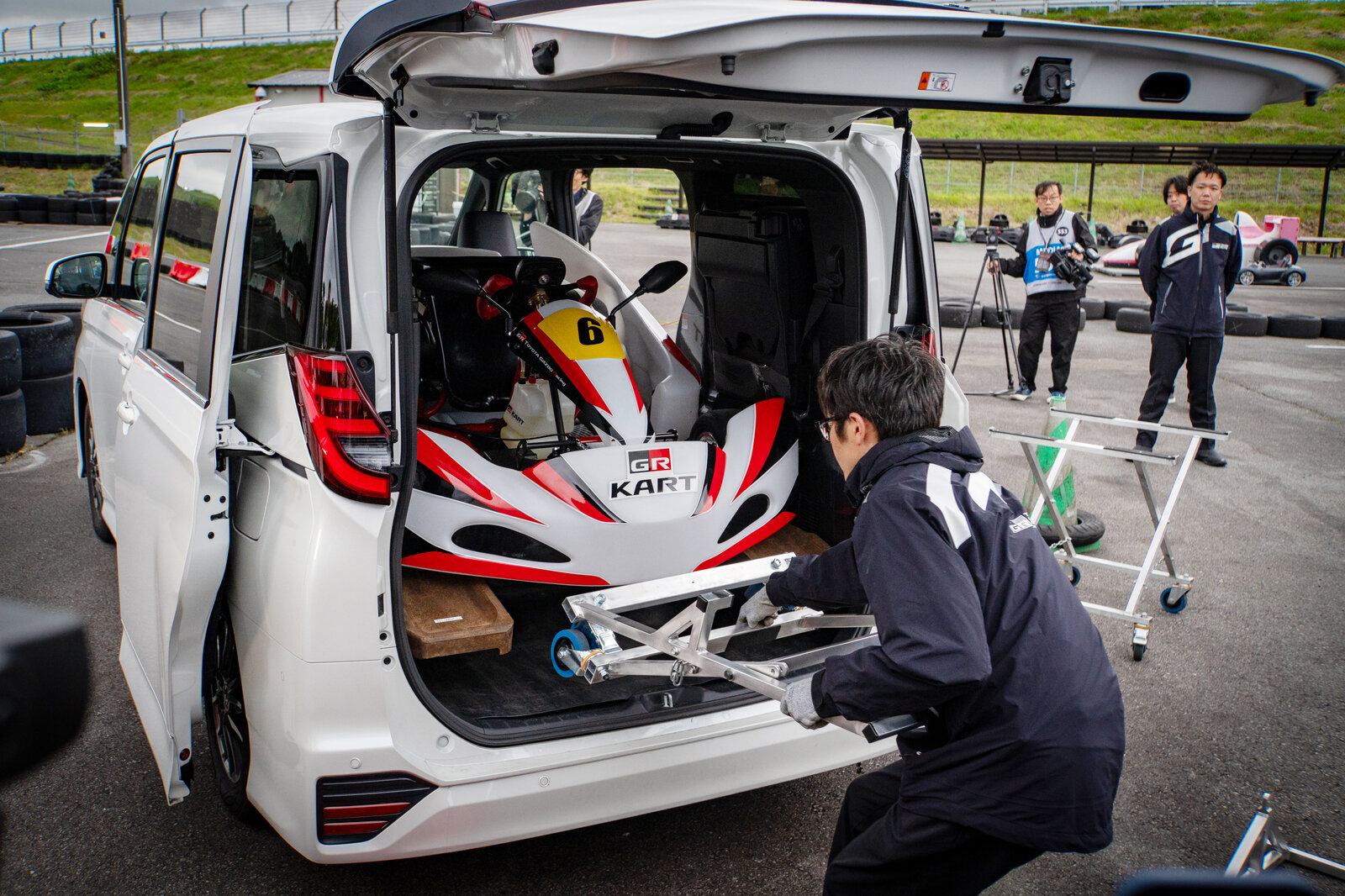
What’s more, until now transporting karts was mostly done by a HiAce or similar commercial vans, adding another hurdle for would-be racers. To solve this, Toyota unveiled a carrier concept model that allows the kart and stand to fit neatly into typical family vehicles such as the Noah.
At a roundtable summing up the event, President Takahashi of TGR fielded a question about the growing cohort of peers pursuing carbon neutrality.
President Takahashi
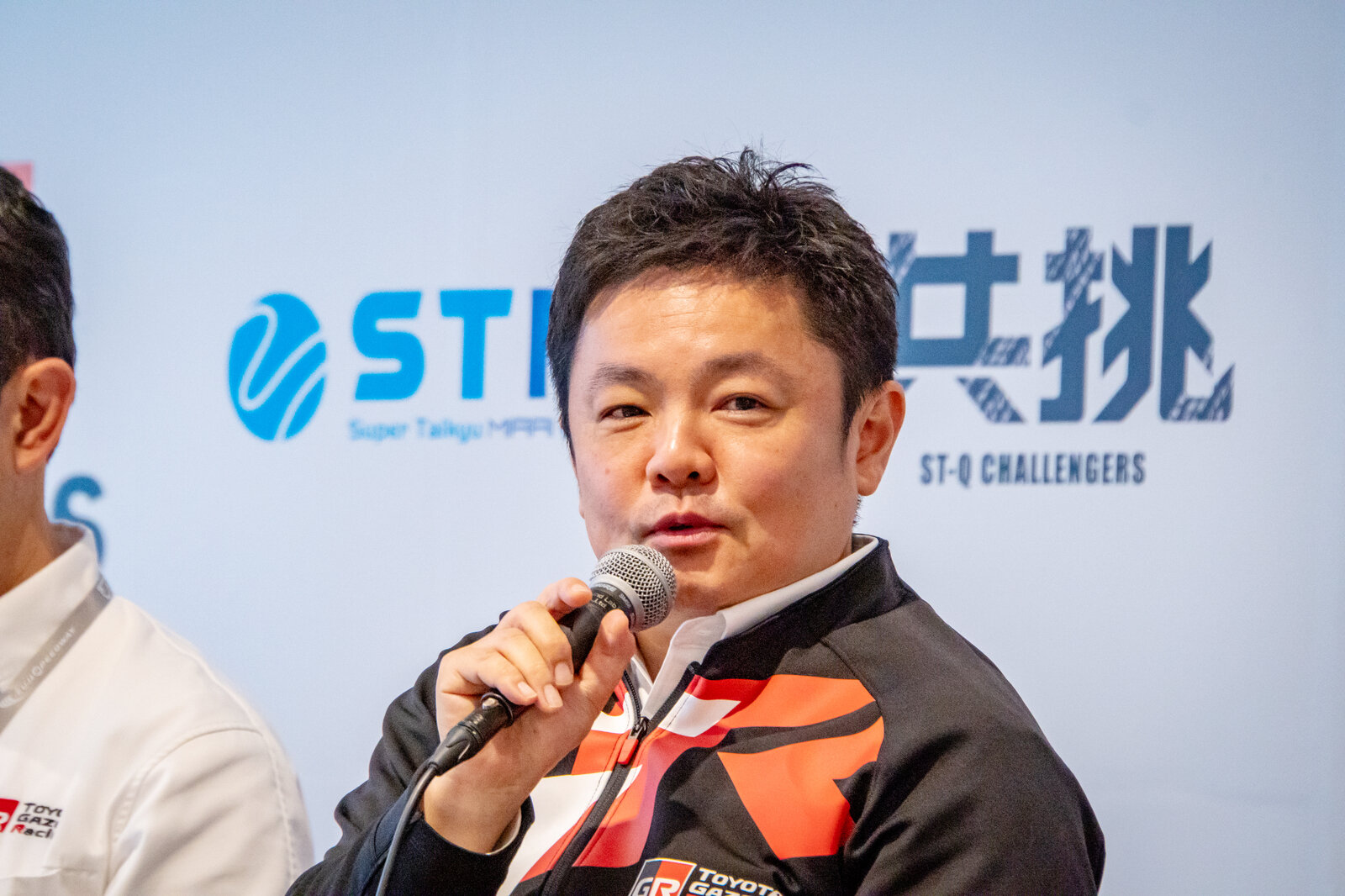
As you could see in the event space, I feel that the “use” options are expanding, including things like roasting coffee beans with hydrogen.
More options mean more hydrogen being used. This, in turn, drives down the cost of hydrogen, and I think we are really seeing the beginnings of this positive cycle.
It would be great to see more and more of our peers jumping on board and using hydrogen.

